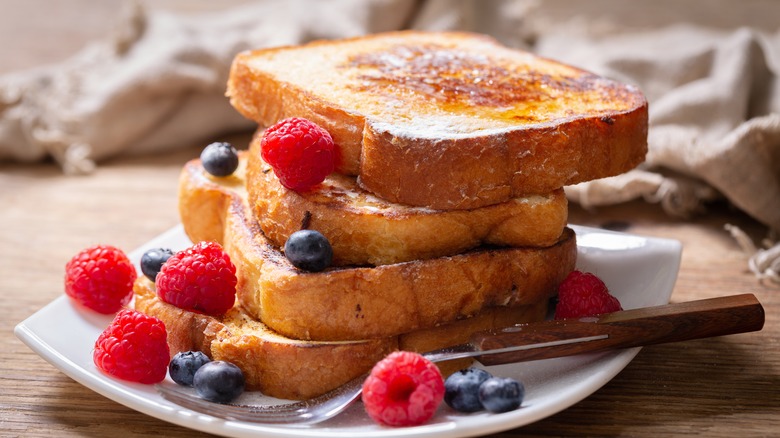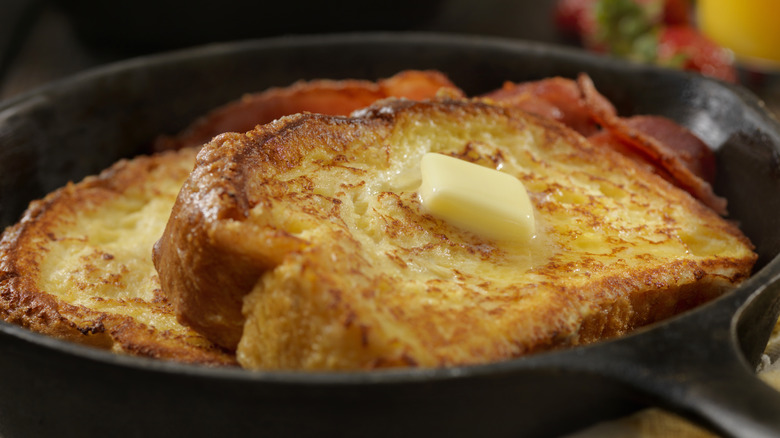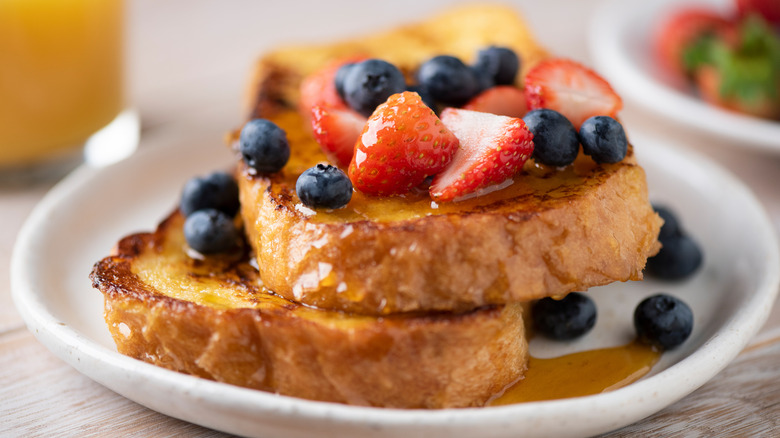French Toast Isn't Quite As French As We Thought
If you're craving something sweet in the mornings, one sweet, bready breakfast might come to mind: French toast. The morning meal might carry the obvious country association in its name, but it turns out that the dish isn't actually from France. In fact, the food's origins may date back to ancient Rome, instead.
The dish was originally called "pan dulcis," and although it's unclear when it was actually invented, it does make an appearance in a 5th-century B.C. book. The original recipe called for day-old bread to be soaked in an egg and milk mixture, then fried in some kind of oil — extremely similar to today's French toast.
Over the years, though the recipe may have seen some changes in preparation (like Jacques Pépin's ice cream substitution), the base of the recipe has ultimately stayed the same. Therefore, it's pretty safe to credit the Romans with the invention of the dish. But if the dish didn't actually originate in France, how did the name "French toast" come to be?
There are a few rumors about the name
There's no clear answer on why the name was chosen for the dish, but there are two theories that could provide a little insight. The first suggests that a chef by the name of Joseph French claimed ownership of the original dish in 1724. He wanted to name the meal after himself but forgot to add the possessive apostrophe to the end of his name before sharing the recipe, instead dubbing it French toast.
The other possible explanation suggests that the name may have just been a simple marketing tactic. In order to make the meal seem fancier than it really was, the "French" was added in an attempt to align the dish with higher-class, international cuisine. This connotation may have inspired more customers to order the dish — and it allowed restaurants to add a little extra onto each bill.
While French toast's origins might not actually have anything to do with France, there is an actual French dish that's pretty similar.
The French do have a similar dish
In France, there is a dish called pain perdu that pretty closely resembles the French toast we know and love today. There are a few important distinctions between the two dishes, though. Pain perdu was created as a way to revive stale bread, and you'll never catch the recipe calling for a simple slice of sandwich bread. French breads, like crusty baguette slices or fluffy brioche, are the options called for in this recipe.
In addition to the standard eggs and milk used to soak the bread, the classic pain perdu recipe also calls for the addition of cream to the mixture. This will amplify the rich and gooey factor of the custard soak, allowing your finished dish to be just a little extra indulgent after it fries (just one of the many ways to improve your take on French toast).
Although the recipes for pain perdu and French toast are similar, the two differences in the dishes set them apart as separate recipes. No matter which version you decide to cook up for breakfast, both are sure to be equally delicious.


